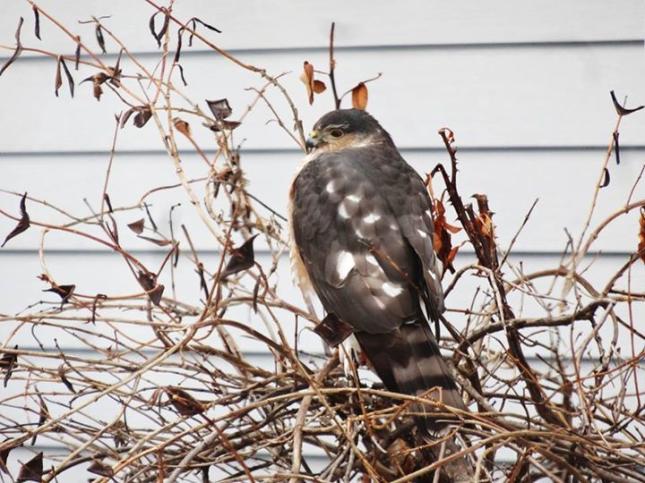Fun Facts About Cooper’s Hawks
- Among the bird world’s most skillful fliers, Cooper’s Hawks are common woodland hawks that tear through cluttered tree canopies in high speed pursuit of other birds. You’re most likely to see one prowling above a forest edge or field using just a few stiff wingbeats followed by a glide.
- Cooper’s Hawks are forest and woodland birds, but our leafy suburbs seem nearly as good. These lanky hawks are a regular sight in parks, quiet neighborhoods, over fields, at backyard feeders, and even along busy streets if there are trees around. If you put out seed for birds in your backyard, there’s a chance you’ll also attract the attention of a Cooper’s Hawk. While catching smaller birds is just doing what comes naturally for a Cooper’s Hawk, many of us would prefer not to share the responsibility for the deaths.
- If a Cooper’s Hawk takes up residence in your yard, you can take your feeders down for a few days and the hawk will move on.
- Cooper’s Hawks mainly eat birds. Small birds are safer around Cooper’s Hawks than medium-sized birds: studies list European Starlings, Mourning Doves, and Rock Pigeons as common targets along with American Robins, several kinds of jays, Northern Flicker, and quail, pheasants, grouse, and chickens. Cooper’s Hawks sometimes rob nests and also eat chipmunks, hares, mice, squirrels, and bats
- Cooper’s Hawks show the classic accipiter flight style: a few stiff wingbeats followed by short glides. But in pursuit of prey their flight becomes powerful, quick, and very agile, allowing the bird to thread its way through tree branches at top speed. Courting birds display by flying with slow wingbeats, then gliding with wings held in a V. Males make a bowing display to females after pairing and before beginning to build the nest.
- Dashing through vegetation to catch birds is a dangerous lifestyle. In a study of more than 300 Cooper’s Hawk skeletons, 23 percent showed old, healed-over fractures in the bones of the chest, especially of the furcula, or wishbone. A Cooper's Hawk captures a bird with its feet and kills it by repeated squeezing. Falcons tend to kill their prey by biting it, but Cooper’s Hawks hold their catch away from the body until it dies.
- The oldest recorded Cooper's Hawk was a male and at least 20 years, 4 months old. He was banded in California in 1986, and found in Washington in 2006.


